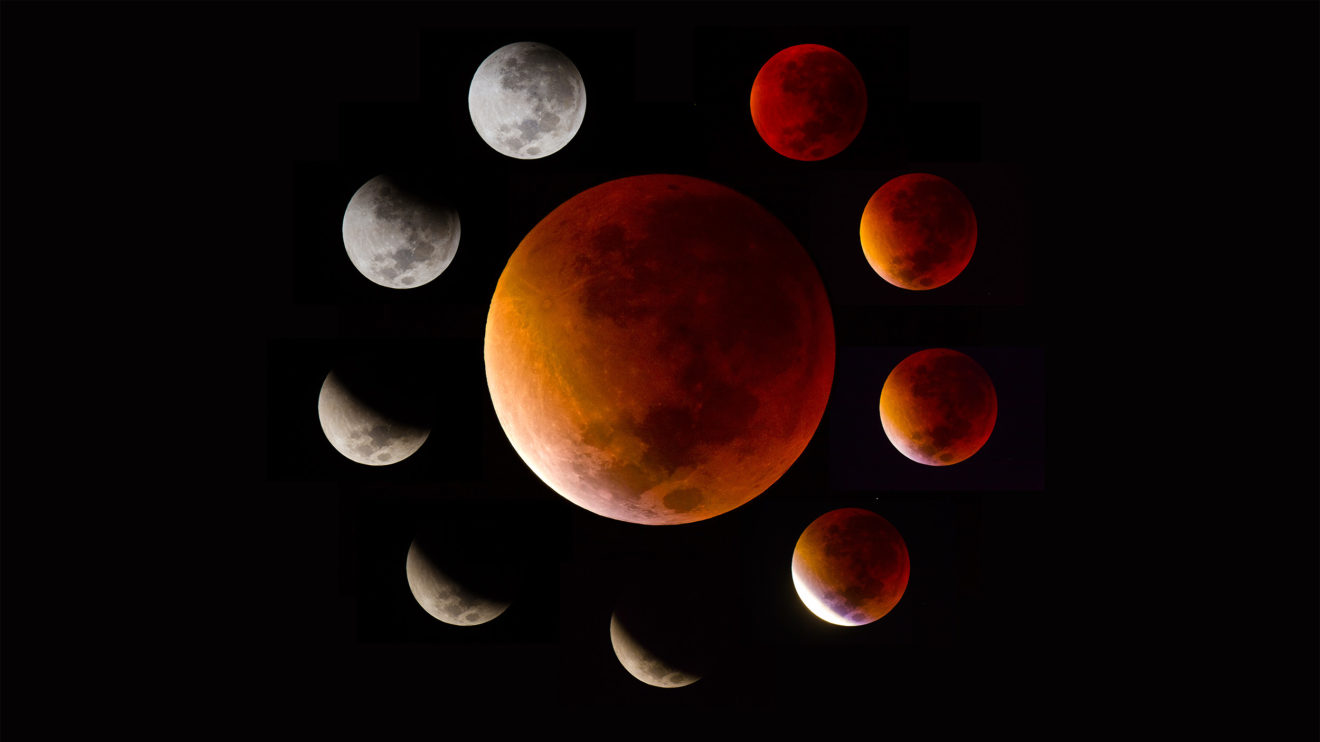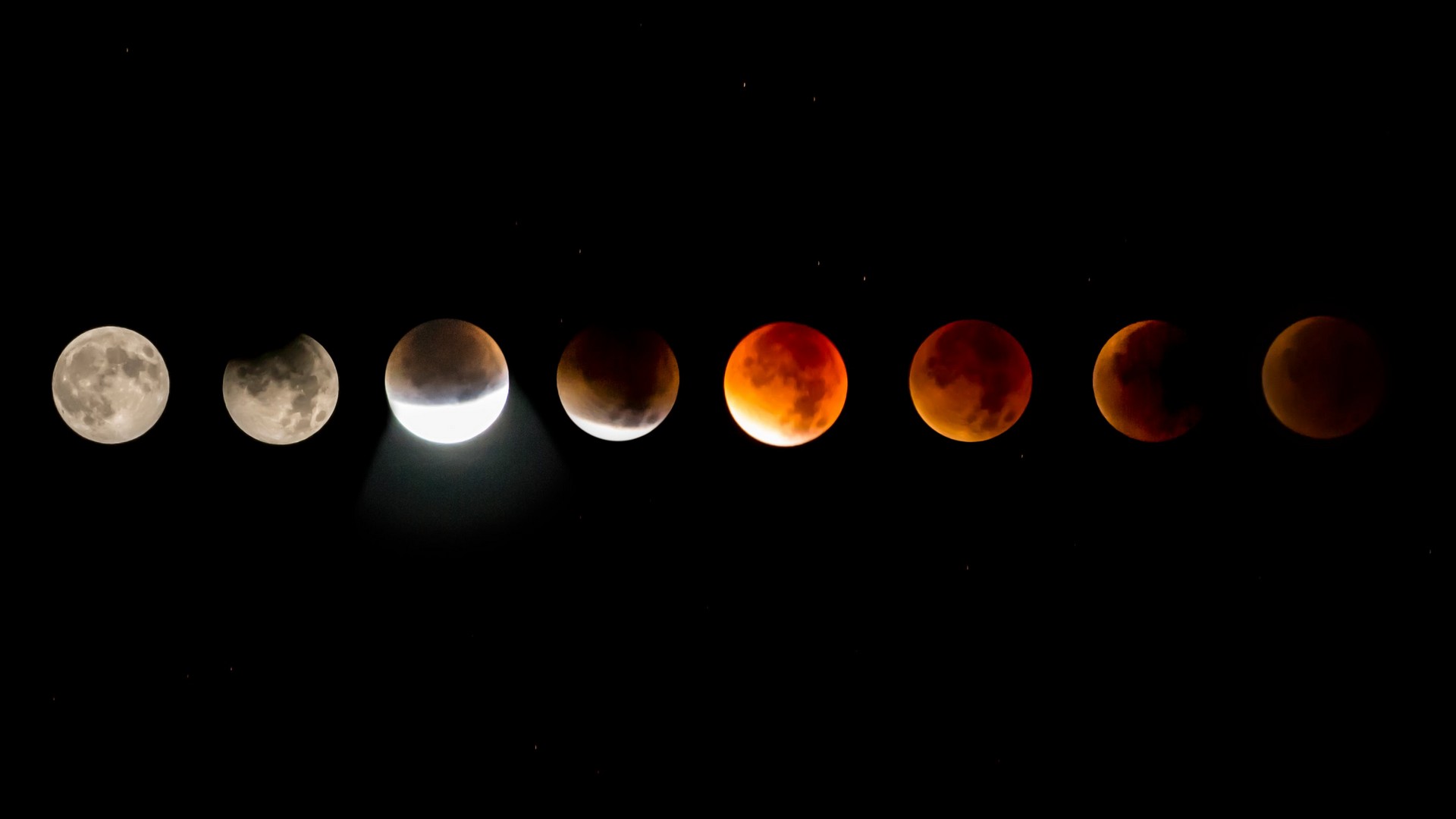

Lunar eclipses can only happen when the moon is directly opposite to the sun in our Earthly sky at the time of the full moon.

So there's no problem in getting the moon completely immersed in the umbra there's plenty of room. The moon is about 2,200 miles in diameter. At the moon's average distance from Earth of 239,000 miles, the umbra measures roughly 5,800 miles in diameter. When the moon moves completely into the Earth's dark shadow cone (called the "umbra") we call that a total lunar eclipse. Joe Rao is 's skywatching columnist, as well as a veteran meteorologist and eclipse chaser who also serves as an instructor and guest lecturer at New York's Hayden Planetarium. Other atmospheric factors such as temperature and humidity also affect the moon's appearance during a lunar eclipse. "How gold, orange, or red the moon appears during a total lunar eclipse depends on how much dust, water, and other particles are in Earth's atmosphere" according to NASA scientists. When the moon passes through Earth's umbra during a total lunar eclipse, the red light reflects off the lunar surface, giving the moon its blood-red appearance.

Shorter wavelengths such as blue light are scattered outward, while longer wavelengths like red are bent - or refracted - into Earth's umbra, according to the Natural History Museum. When sunlight reaches Earth, our atmosphere scatters and filters different wavelengths. The eerie red appearance is caused by sunlight interacting with Earth's atmosphere. (Image credit: Future) What happens during a lunar eclipse? Why does the moon turn red during an eclipse?ĭuring a total lunar eclipse, the lunar surface turns a rusty red color, earning the nickname " blood moon". In this diagram, the moon is located in the penumbral shadow so it is experiencing a penumbral eclipse. During a total lunar eclipse, the umbra completely covers the lunar surface. Whether the moon sits in the penumbra or umbra will dictate the type of lunar eclipse. According to The Old Farmer’s Almanac, this is because it coincides with the time of year that beavers take shelter.During a lunar eclipse the sun, Earth and moon align so that Earth blocks sunlight from reaching the moon and casts a shadow across the lunar surface. Any full moon within the month of November is called a Beaver Moon. It’s as if all the world’s sunrises and sunsets are projected onto the moon.” Why is it called the Beaver Blood Moon eclipse?Įach of the year's full moon gets a nickname. "The more dust or clouds in Earth’s atmosphere during the eclipse, the redder the moon will appear. “During a lunar eclipse, the moon turns red because the only sunlight reaching the moon passes through Earth’s atmosphere,” NASA explained.

The color is why a total lunar eclipses are often referred to, colloquially, as a “Blood Moon.” If the moon is completely within the darkest part of the shadow, known as the umbra, then it’s a total lunar eclipse.Įarth's atmosphere refracts (or bends) the sun's light, causing the moon to take on a copper-red appearance. The definition of a lunar eclipse? Easy: This phenomenon happens when the moon, Earth and sun align in such a way that the moon, in its full phase, passes through the Earth’s shadow. Read on to learn more about the cosmic display, including how and precisely when those in the U.S. The upcoming event - known as the Full Beaver Blood Moon total lunar eclipse - will the last total lunar eclipse to occur until March 14, 2025.


 0 kommentar(er)
0 kommentar(er)
